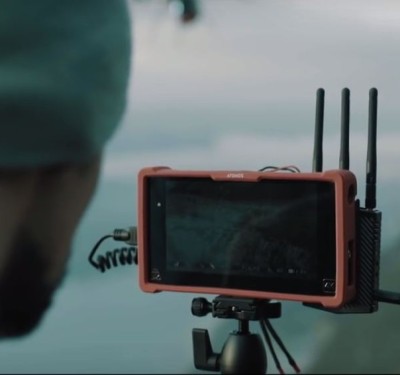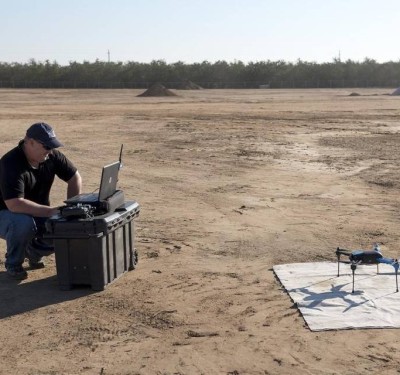Applying a systems thinking approach and leveraging deep experience in AAM airspace management solutions, ResilienX’s AAM OptiX platform links complex sub-systems into a harmonized AAM control center.
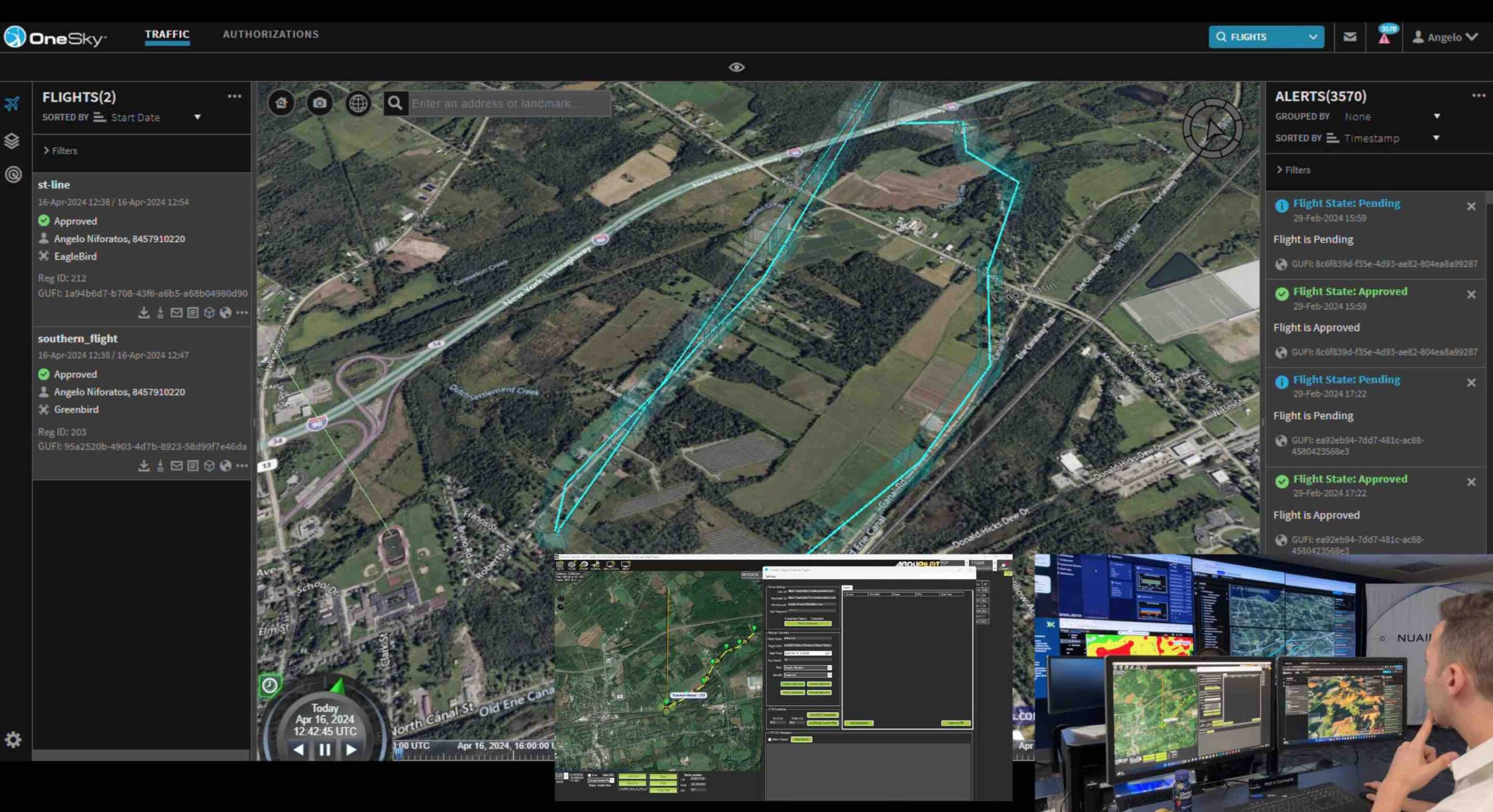
Systems thinking is an approach to problem-solving that views problems as parts of an overarching relational system, rather than as individual issues. It emphasizes understanding the relationships and interdependencies between various components within a system. A key principle of systems thinking is interconnectedness—because everything is connected to everything else in a meaningful way, changes in one part of a system affect other parts. This holistic vantage point allows for sensitivity to feedback loops and emergent properties.
ResilienX’s method of solving for Advanced Air Mobility (AAM) operations illustrates how an effective systems approach provides the glue for complex interdependent aviation operations and analytics platforms. ResilienX’s AAM OptiX system of systems acts as the operational spine supporting functional, mature AAM and Uncrewed Traffic Management (UTM). OptiX orchestrates the integration and operational management of many diverse platforms to achieve “cohesive, comprehensive, situational awareness” for AAM ecosystems.
The constituent sub-systems and partners under the OptiX umbrella include: situational awareness and traffic management (OneSky); cyber security (Assured Information Security or AIS); user experience design (HF Designworks); safety cases (Anzen Unmanned); data fusion (Sunhillo); weather intelligence (TruWeather Solutions); and in-time aviation safety management systems (ResilienX). Performing as a seamless network of interconnected components and capabilities, OptiX is the baseline infrastructure from which AAM test and evaluation efforts can be launched and scaled. Together, they encompass and aggregate radar; sensors; C-UAS; command and control; autonomy; air traffic control; airport infrastructure; and eVTOL missions.
ResilienX team believes complex systems of systems need to be intentionally designed and architected, not simply integrated. They follow a classical Model Based Systems Engineering (MBSE) approach for the design of UTM and AAM ecosystems that meet regulatory and stakeholder requirements. The result is a repeatable, maintainable, and understandable system, with curated engineering documents available to stakeholders, including regulators. This approach avoids vendor lock and creates a completely “open” system that is fully extensible and scalable.
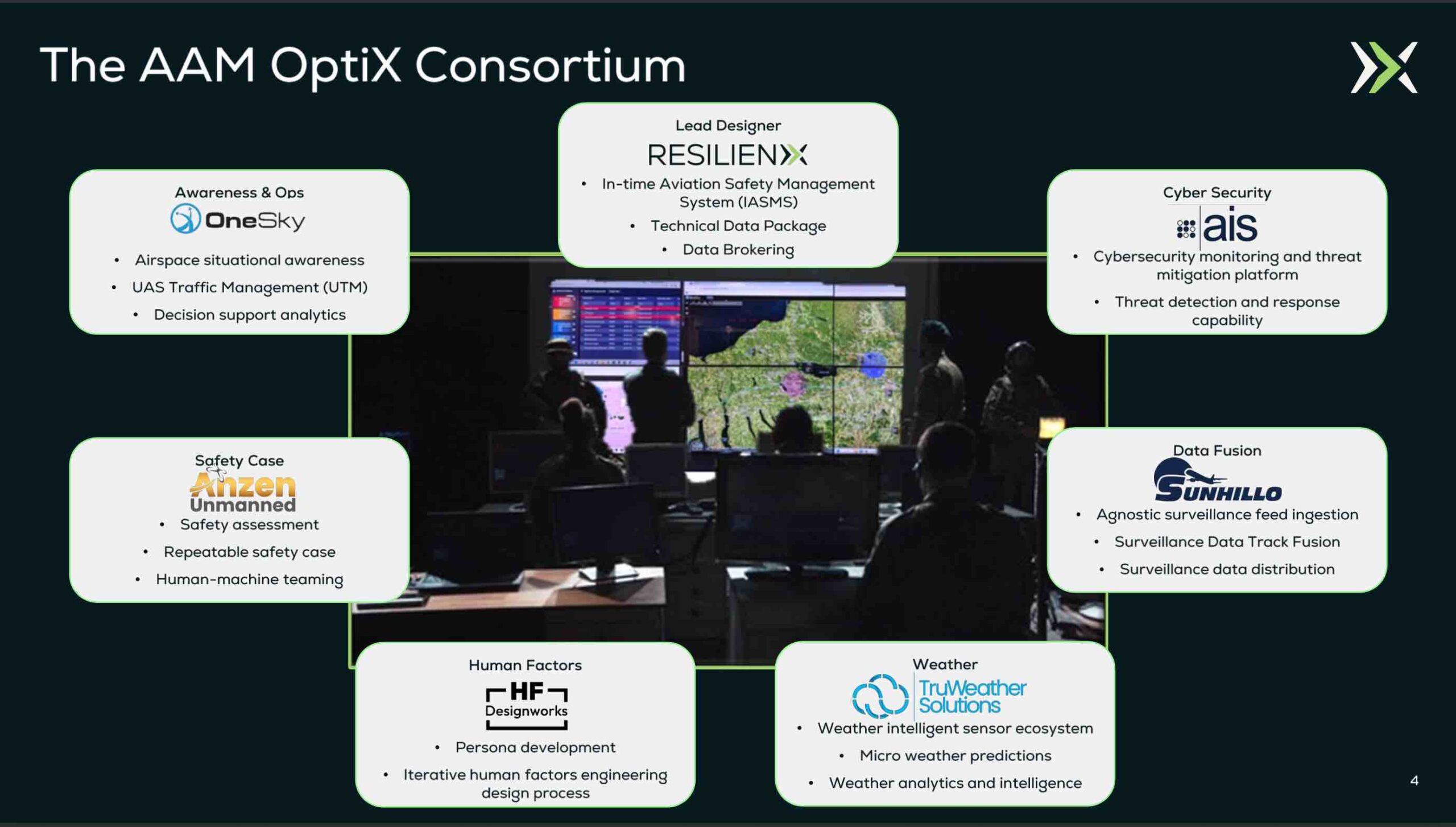
THE ORIGINS
A software company specializing in safety assurance solutions for highly automated and autonomous ecosystems, ResilienX has a special focus on the design and development of key digital infrastructure for AAM operations management. ResilienX has been working toward integrating uncrewed systems into the U.S. National Airspace System (NAS) since its founding in 2018.
The company’s co-founders, Andrew Carter and Ryan Pleskach, have deep experience in AAM airspace solution design, having previously held the roles of lead system architect and systems integration lead for the U.S. Army’s Ground Based Sense and Avoid (GBSAA) system program. The Army GBSAA program started in 2008 and was approved and first deployed in 2016. The system is currently deployed at five U.S. Army sites and three Air National Guard (ANG) sites and is approved by the FAA and Army Aeronautical Engineering Directorate (AED) for unrestricted BVLOS operations in the NAS. The Army system is comprised of sensors, software, single board computers, networking equipment, a Network Time Protocol server and a multitude of additional components, creating a system of systems with more than 50 constituent parts.
To achieve an airworthiness certification, the system was required to be fault tolerant, without a single point of failure. This was achieved in a cost-effective manner by developing “a robust health and integrity monitoring capability as well as a graceful degradation scheme for the system.” The Army GBSAA system was designed to DO178C Design Assurance Level B standards, the primary certification standard authorities such as the FAA, EASA and Transport Canada use to approve commercial software-based aerospace systems. ResilienX was founded to take the lessons learned from the Army GBSAA initiative, and apply them to commercial markets, focusing on enabling airspace access to uncrewed systems at scale.
ResilienX has worked with NASA and the U.S. Air Force (USAF) to educate the UAS community about in-time system-wide safety assurance and the growing need for an in-time aviation safety management system (IASMS) for use in AAM operations. Through research and development with NASA, leading AAM and IASMS workshops, developing educational content as well as speaking and exhibiting at conferences and industry events, ResilienX provides the broader industry with their unique knowledge and expertise.
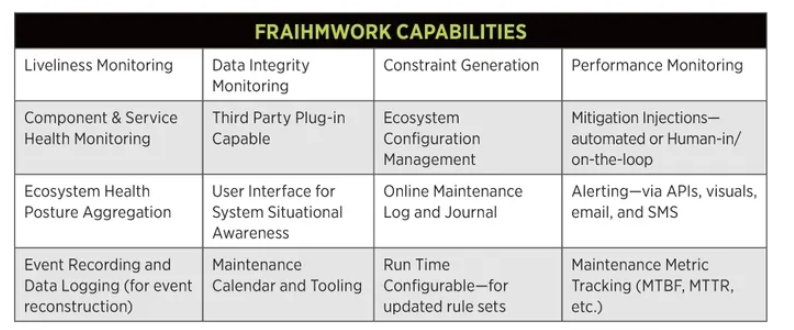
THE FRAIHMWORK
The technical cornerstone of AAM OptiX is the Fault Recovery and Isolation Health Monitoring frameWORK (IASMS FRAIHMWORK), developed by ResilienX. FRAIHMWORK is a software solution that monitors the health and integrity of complex ecosystems and maintains system situational awareness. It is a software layer, operating above and encompassing the enabling infrastructure. FRAIHMWORK feeds information, in the form of alerts or constraints, to UTM/AAM ecosystem partners and has achieved TRL-9, the highest Technology Readiness Level standard used by NASA, DOD and ESA.
FRAIHMWORK is a highly configurable mission assurance rules engine, and from a data security perspective, treats every monitored system as a “black box” and does not require special hardware or access to proprietary data. This results in an increased ability to maintain system robustness and resilience in quickly evolving and security conscious environments. ReslienX’s model goes beyond the traditional approach of defining requirements for each component of a system of systems to fit into a given fault tolerance or fault management scheme, as that does not easily adapt or extend to the “next” system. To meet the future needs of autonomous systems, FRAIHMWORK is designed with its primary goal to be adaptable, extensible and scalable.

A DAY IN THE LIFE OF AN OPTIX AAM OPERATOR
In late 2023, ResilienX was awarded a contract from NASA and USAF’s innovation arm, AFWERX, as the prime contractor for an AAM Operations Center located at Syracuse Hancock International Airport in Syracuse, NY, co-located with the NUAIR Center of Excellence.
As a result of the work implementing the AAM Operations Center, ResilienX has developed a demonstration illustrating a “day in the life of an AAM operator,” named Murphy, putting the OptiX AAM system of systems to work and monitoring its operational health. It provides a detailed and realistic illustration of how OptiX functions.
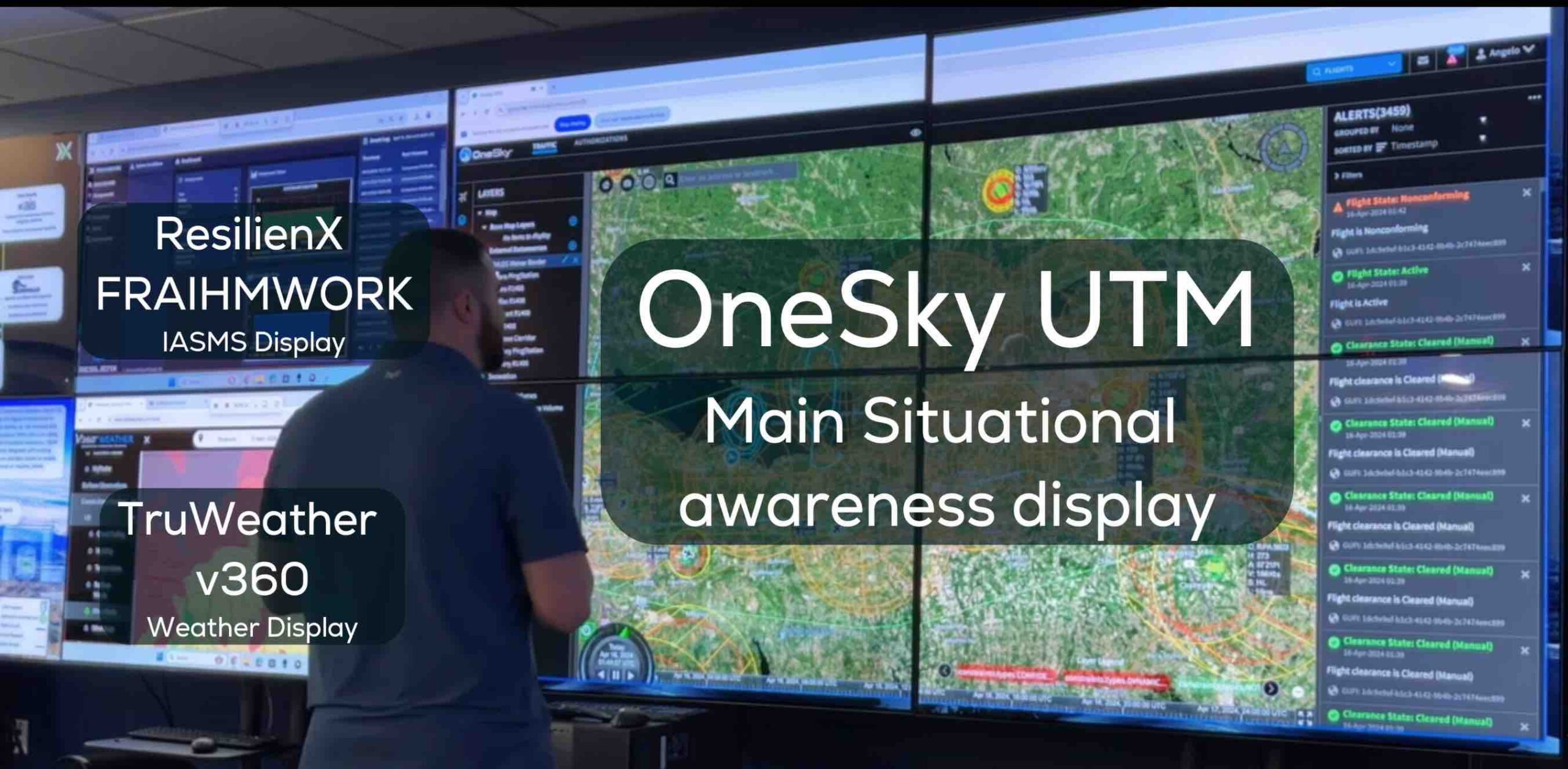
Day Begins: Murphy, the airspace manager for a regional BVLOS system that enables AAM across multiple use cases is ready to take over the shift doing airspace management. Their first task is to get up to speed on the current state of operations, weather, and the systems enabling UAS activity.
The OneSky display shows a fused common air picture, driven by the Sunhillo data fusion engine, which fuses cooperative, non-cooperative, and telemetry tracks. The display has various data layers that help achieve situational awareness of the operating area such as constraints, airspace classifications and surveillance volumes. It shows active and historical alerts, which can be generated by any of the OptiX subsystems. It shows a list of all the current and planned flights. Murphy uses it to get a feel for the day’s traffic density and workload.
To get a feel for the current ecosystem status, Murphy brings up the ResilienX in-time aviation safety management system. Murphy acknowledges the conditions and checks the various systems and data feeds contributing to today’s operations and checks the event log for any recent events.
Next, Murphy gets a feel for the weather using the TruWeather V360 platform. Murphy looks at the winds at 80 meters and then brings up recent local METARs for better situational awareness. Murphy brings up a stoplight chart for today’s operations. The operational assessment is configured specifically for the performance characteristics of the craft Murphy knows are out in the field today.
Planning Operations: Operators looking to use the OptiX system create and submit flight plans for their operations. These flight plans are displayed and approved or denied based on conflicts detected by the strategic deconfliction capability. The airspace manager has reach back capability to operators to let them know why their flight plan was denied and help them find an alternate route.
Operators who received a rejected flight plan notification and a note from the airspace manager can replan to strategically deconflict from other traffic. The operator submits a flight plan that is deconflicted and receives his approval to fly.
Telemetry Issue: Murphy spends much of the day monitoring the airspace, operations and systems. OptiX provides a digital watchdog on all data streams to validate health, integrity and performance. The telemetry feed is reporting values that are not feasible. The IASMS detects the situation and sends an alert. It also generates a constraint and pushes it out to other operations through a DSS. Murphy is now alerted to the problem and can begin contingency management. The operator should have already received an alert on the display, but Murphy wants to establish positive contact and try to help debug the situation.
Incursion: In addition to strategic deconfliction during the planning phase of operations, OptiX provides tactical alerting for predicted separation issues. We have an eVTOL coming in to land and there is a UAS operating in the area already. Optix shows Muphy the distance and time to a well clear violation to track the incursion. OptiX can easily be integrated with third party detect and avoid systems to provide automated maneuver guidance. Without automated avoidance guidance, Murphy contacts the operators and tells them to hover at a low altitude until the eVTOL lands.
Murphy monitors the ongoing situation to make sure the UAS is out of the way and the eVTOL can land safely. OptiX shows the time to a potential well clear violation and the altitude difference between the vehicles. Murphy can use these indicators to assess if there are any issues. Once the eVTOL has landed, Murphy lets the UAS operator know it’s clear to continue the mission.
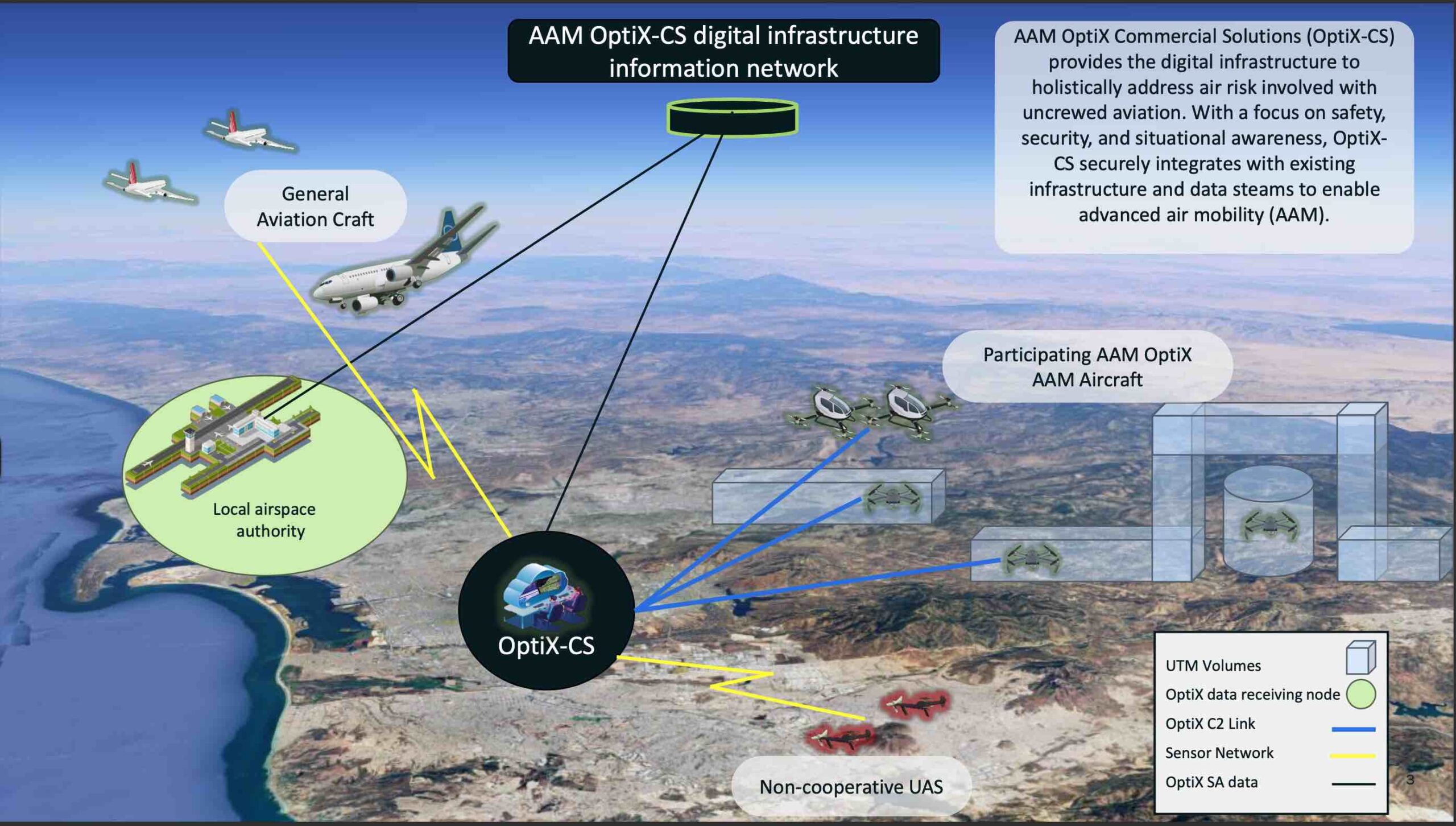
Sensor Fault: OptiX detects that a surveillance sensor is not detecting targets where it should be and may have a sensitivity issue. Murphy can use the system to dig into the issue and learn more about the problem and what the options are to mitigate it. In this case, because many of the operations are relying on ground-based surveillance for their safety case, Murphy chooses to create a constraint around the airspace that does not have overlapping coverage until a technician can diagnose the issue. Murphy notices an upcoming operation is planned to enter the constraint and reaches out to let the operator know there is a problem. The operator is sent the constraint and can replan the operation around it.
Murphy can use the OptiX data layers to show the surveillance coverage that is still intact. Murphy confirms the operation is no longer planning to traverse airspace, which lacks surveillance.
Cyber Fault: Cyber security is a critical element of any advanced air mobility ecosystem. OptiX continuously scans and monitors the cyber posture of the ecosystem and alerts if any issues are detected.
Murphy’s goal is to use OptiX to close potential “open doors” quickly. Here the system has identified two potential cyber issues and alerted Murphy to the problems. Murphy uses OptiX to better understand the issue and then uses the built-in mitigations to resolve the issue automatically.
Now that the first issue is resolved, Murphy digs into the second issue the system detected. The second cyber condition requires a firmware update that must be done onsite by a maintenance technician. Murphy creates a maintenance ticket for Matt, the system maintainer, to update the firmware to close the known vulnerability.
Fault Repairs, Mitigation: Matt arrives over the weekend to dig into some of the issues that were discovered during operations for the week and try to resolve them. The first action is to install a firmware update to clear the cyber vulnerability that was detected.
Next, Matt needs to figure out what is going on with the sensor that was demonstrating degraded sensitivity.
Matt uses the system to look at how the sensor has been behaving over time to give clues about what the root cause may be. He calls the OEM to see if they have any ideas, based on what he is seeing. System documentation can be uploaded and later viewed by any maintainer. This enables OptiX to maintain up to date maintenance documentation and notes from maintenance technicians across the world who use similar systems.
Armed with this knowledge, Matt is headed to the radar site to perform the fix. Matt calls in to let Murphy know he has completed maintenance. Murphy completes the repair cycle, which lets OptiX know the radar system is back online and should be back to an operational state and to start monitoring it again.
And with that, Murphy is done for the day. While a lot of things went wrong, the OptiX system helped Murphy detect, assess, and mitigate each issue as it occurred.
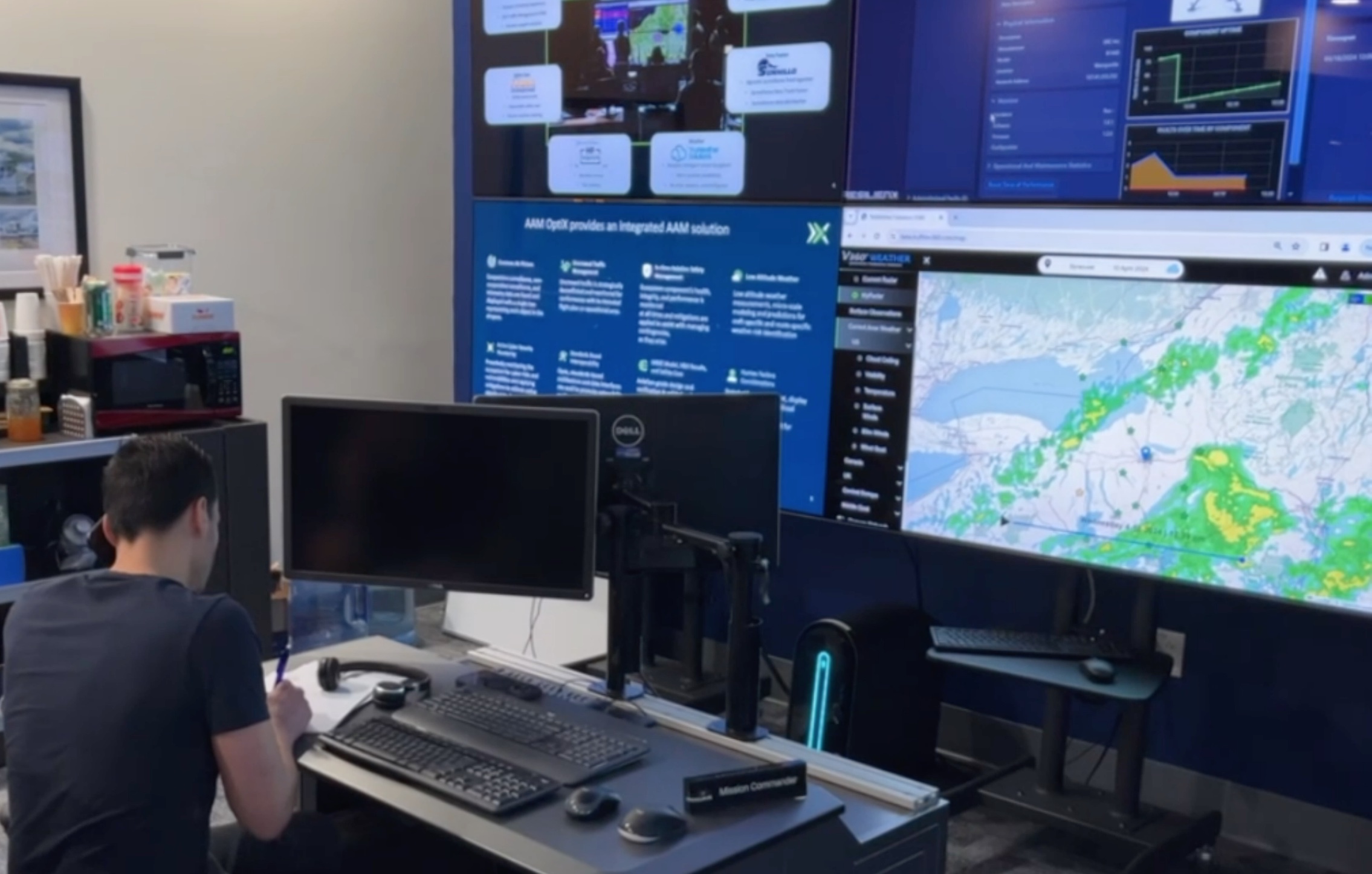
WHAT’S NEXT
AAM OptiX is currently going through verification and validation (V&V) testing at the NUAIR Center of Excellence. It is on track to be deployable to additional locations in October, with more deployments planned for Q4. The second year of the original NASA/AFWERX contract will be used to improve the system of systems based on feedback from system users.
In July, ResilienX announced it has been awarded a Phase III Small Business Innovation Research (SBIR) contract. This contract will enable ResilienX to work closely with NASA’s System-Wide Safety (SWS) project, an R&D project aimed at advancements toward the safety and resilience of future highly autonomous aviation systems and aircraft.
The collaboration with NASA’s SWS project will lead to a more mature capability by integrating NASA developed services that proactively address safety risks associated with hazards. Integration will use ResilienX’s FRAIHMWORK, which can underpin the safety assurance of future AAM ecosystems.
Carter said, “We’ve enjoyed a close relationship with NASA around IASMS development, from early concept of operations development to years of R&D and commercialization of the concepts. This program gives NASA a platform to discover and resolve challenges of technology transfer, identify where standards may be needed, and leverage numerous features of our platform that they do not have to develop themselves. For ResilienX, we can access NASA developed technology and deploy it to commercial environments. This program is a first step to leverage innovative NASA technology within the emerging IASMS realm, out of the lab and into application, where it can more directly and rapidly make our future skies safer.”
Steven Young, NASA SWS sub-project manager for IASMS capabilities for emerging operations, said ResilienX’s “expertise and innovative approach to safety assurance will be invaluable as we work together to address the challenges and opportunities presented by future classes of increasingly autonomous aviation systems and aircraft.”
This speaks broadly to the trajectory of ResilienX, providing forward looking while also currently deployable and mature safety and system monitoring solutions in the rapidly evolving aviation safety environment.



